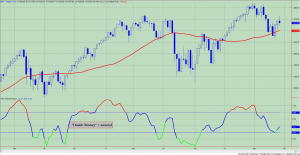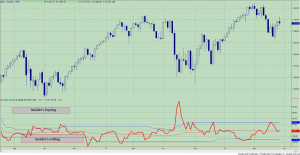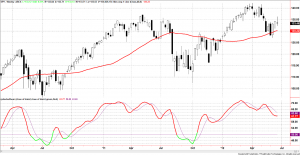by Guy Lerner, The Technical Take
For several weeks, I have been of the opinion that whatever bounce develops would not carry too far because sentiment really wasn’t too bearish at the bottom. Large rallies usually start with real extremes in investor sentiment and consensus among the sentiment data, which we did not see despite the SP500 dropping about 10% over 8 weeks from the April highs. Although the “dumb money” was bearish (i.e., bull signal), corporate insiders were neutral. Throw in the fact that investors have been primed to front run anything that sounds like quantitative easing, the recent announcement by the Fed of more Operation Twist was met with selling. We may quantify investors as the “dumb money” or “smart money”, but investors do recognize the only thing propping up this market is the printing press. So let’s give them credit here.
Investors weren’t phased by the Fed’s new round of asset purchases, and if anything, the markets were saying, “Is that all you got?” Maybe we should take Ben Bernanke at his word. They are monitoring events, and they are ready and willing to use the big bazooka. But not now. Yes, the economy is weakening, but with prices still above its 200 day moving average, “things” can’t be too dire. Simply put, I think it will take lower prices, which will bring out the bears, and of course, everyone will be clamoring that the Fed has to do something, and they likely will. That is what they do.
I have been saying for months now that the sentiment data has been consistent with a market top, and the recent weak “bullish” signal is consistent this observation. There is nothing new to suggest that there won’t be better buying opportunities ahead.
The “Dumb Money” indicator (see figure 1) looks for extremes in the data from 4 different groups of investors who historically have been wrong on the market: 1) Investors Intelligence; 2) MarketVane; 3) American Association of Individual Investors; and 4) the put call ratio. This indicator is neutral.
Figure 1. “Dumb Money”/ weekly

Figure 2 is a weekly chart of the SP500 with the InsiderScore “entire market” value in the lower panel. From the InsiderScore weekly report: “Insider sentiment improved across the market last week, moving from a slight Sell Bias to Neutral, as the number of buyers rose 10% and the number of sellers fell -24%. The result was a near-even ratio of buyers-to-sellers. There were pockets of positive sentiment within Energy, Consumer Discretionary and Healthcare, while the Technology sector showed some slightly negative signals. We continued to see a steady stream of actionable buying on a company-level. Insider trading volume will begin to seasonally decline this week as companies close trading windows ahead of the end of the quarter, not to open them again until after their respective Q2’12 earnings announcements.”
Figure 2. InsiderScore “Entire Market” value/ weekly

Figure 3 is a weekly chart of the SP500. The indicator in the lower panel measures all the assets in the Rydex bullish oriented equity funds divided by the sum of assets in the bullish oriented equity funds plus the assets in the bearish oriented equity funds. When the indicator is green, the value is low and there is fear in the market; this is where market bottoms are forged. When the indicator is red, there is complacency in the market. There are too many bulls and this is when market advances stall. Currently, the value of the indicator is 61.77%. Values less than 50% are associated with market bottoms. Values greater than 58% are associated with market tops. It should be noted that the market topped out in 2011 with this indicator between 70% and 71%.
Figure 3. Rydex Total Bull v. Total Bear/ weekly

Copyright © The Technical Take













